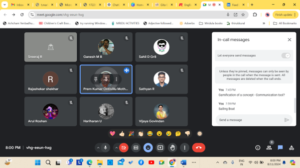Introduction In today’s workplace, communication, and soft skills are more essential than ever. Traditional training methods, however, often struggle to engage participants fully. This is where gamification shines—transforming learning experiences by integrating elements of play, competition, and rewards to make learning more engaging and effective.

The Power of Gamification Gamification utilizes game mechanics—such as points, badges, and leaderboards—to foster engagement and motivation. But gamification can drive a deeper understanding of concepts beyond just winning and help learners become better versions of themselves. For instance, in a maths competition, the goal shouldn’t just be to win but to improve problem-solving skills—an outcome that gamification can help achieve by maintaining focus and engagement.
Key Insights from Our Session
- Focus and Disconnection: Gamification helps participants focus by immersing them in the task, allowing them to disconnect from external distractions. This focused engagement is crucial for effective learning.
- Beyond Winning: While the competitive aspect of gamification can be motivating, the ultimate goal is understanding and self-improvement. Winning draws participants in, but the true success lies in the deeper grasp of concepts—like a maths competition that teaches problem-solving rather than just victory.
- Corporate Applications: In the corporate world, gamification often takes the form of leaderboards, which encourage friendly competition and engagement. A concept shared in our session, the “Sailing Boat,” is an excellent example of how gamification can break the ice and build connections among team members. The team needs to get a decent score for their contribution to save their boats from sinking.
- Vocabulary Improvement: Post-lunch, a colleague shared how they use a game to enhance vocabulary—a simple yet effective method that could easily be incorporated into a weekly routine, benefiting communication skills over time.
- Connecting People: Gamification can bring together both connected and unconnected people by setting rules that foster interaction. This leads to easier communication and a more connected team, allowing ideas to percolate more effectively.
Advantages and Limitations Gamification isn’t a one-size-fits-all solution. While it’s highly effective in many areas—especially in product industries where learning and retention are key—it’s not universally applicable. It’s important to recognize where gamification can be most beneficial and where traditional methods might still be preferable.
Conclusion Gamification is more than just a trend; it’s a transformative tool that can revolutionize the way we approach communication and soft skills training. By making learning more engaging, interactive, and fun, it not only enhances the experience but also drives better outcomes. However, it’s essential to understand its limitations and apply it where it can truly make an impact.
